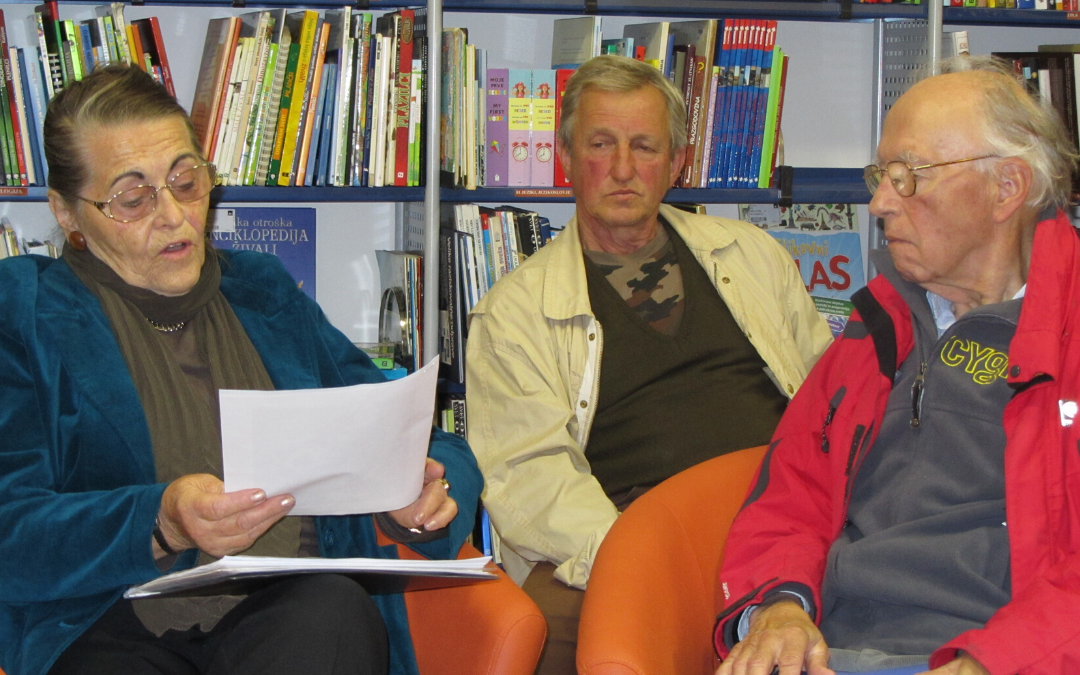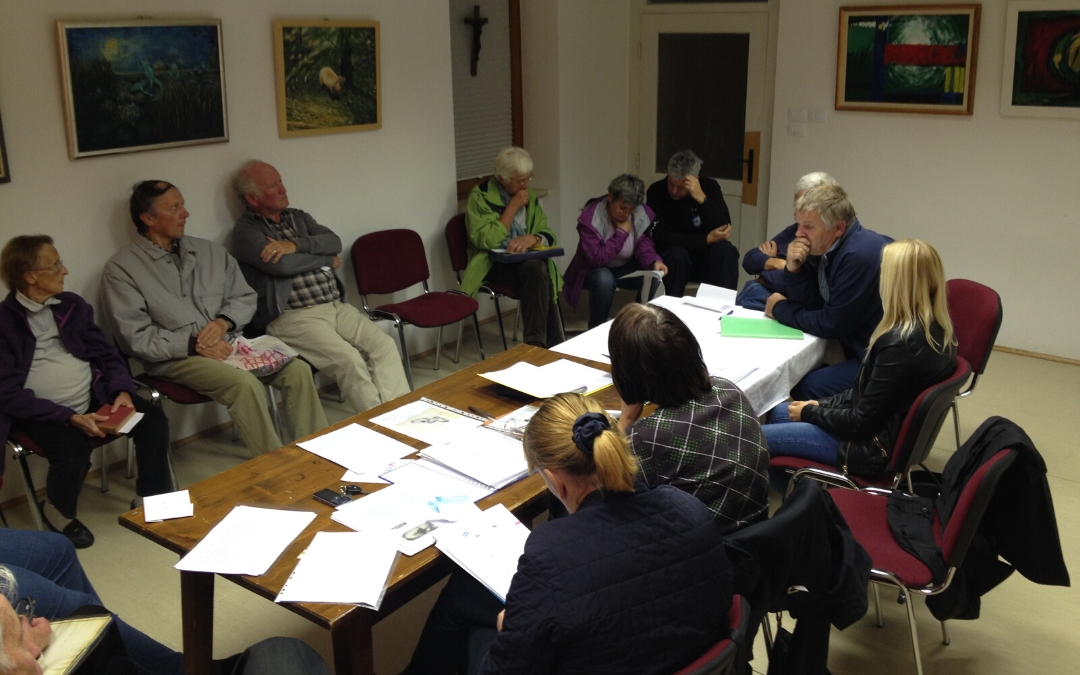In 2003, UNESCO adopted the Convention for the Safeguarding of the Intangible Cultural Heritage. It should contribute to constant bettering its safeguarding, respect, awareness-raising of its importance, and providing international cooperation and assistance.
The Convention also defines oral traditions, expressions, and language as an intangible cultural heritage.
The Jesenice AEC has been implementing the Conservation of cultural heritage project through study circles for 15 years. In this way, we want to encourage people to be aware of its importance, to respect and nurture it and to pass it on to future generations, as well as establish intergenerational dialogue. Thus we record the elderly’s memories of past life in Jesenice. Each year, a booklet of collected stories is published as evidence that the historical memory of Jesenice is strong, alive, and continues to be the main driving force for many activities today. The study circles are organised in cooperation with the Jesenice Municipal Library and the Upper Sava Valley Museum, both of which contribute expert mentoring, and the Municipality of Jesenice, which financially supported the project.
The study group participants love life. They are proud of their individual and common past, and grateful to be able to speak about it in their own way, with human warmth, honestly and openly, even critically, but rarely with writing ambition. It all started with recipes, that were diligently collected and published by the members in the first booklet titled “Kaj so včasih na Jesenicah jedli?” (What did they use to eat in Jesenice?). The next question was: How did they use to live? This led to a continuous project called Conservation of cultural heritage in the local community.
Every year, we explore the history of a local community in the municipality; every year, new participants join the project; every year, we record new personal testimonies about life as it used to be, bring to life new memories, forge new friendships, and publish a new booklet. Without it, the people of Jesenice would be deprived of the pleasant hours while reading the stories written by life in the valley of blast furnaces, red dust, and the close interconnectedness of people who searched and found their place in the sun in Jesenice.
The goal is not only to explore themes and environments, but also to find witnesses who are willing to tell or write down their stories and memories of the past. The key educational resources are the people themselves, their knowledge, memories, and ideas. Various material resources (extracts from literature, local newspapers, video and audio materials), web search engines and photographs are also used.
How do we set to work?
We first meet with the participants at an introductory meeting where we define common goals, outline the framework workflow, and choose a venue for group meetings, each year in the area of Jesenice, whose heritage we are exploring. We meet once or twice a month, and rekindle memories of times gone by. We explore the history of our region, the cultural and sporting life, customs, traditions, and other events that have characterised individual sections of Jesenice. People tell stories about things that made them happy and sad, about the accomplishments and effort invested in them, the obstacles they overcame, and the experience they gained.
We write all this down.
Each December, a new free booklet with collected memories and stories is published – it is snatched up in no time, and can only be borrowed from libraries. We have to admit that these booklets are a beautiful Christmas present for the fellow citizens who are discovering almost forgotten memories through other people’s stories. Booklets are presented at the closing ceremony, attended by more than 100 participants each time.
The booklets published so far have featured as many as 298 personal stories and memories.
There used to be no hand washing soap as we know it today. Potassium semi-liquid soap was used, which the workers mixed with finely ground foundry powder to get the so-called “šmiržajfa” (oil and grease removing soap). This soap was also scarce, and one had to make sure it lasted for a whole week. When we were on vacation work at mechanical engineers, they shared this cleaning agent with us. Of course, they insisted we use it frugally. A friend did not follow this instruction and he soon ran out of this special soap. He had to be taught a lesson he would never forget. Just before the end of the day, he was tasked with undoing a bolt on a machine waiting to be repaired. During the undoing, he got splashed with a few dozen litres of lubricating oil. Angry, he took a handful of the special soap, not knowing that it had previously been replaced with wheel bearing grease mixed with foundry powder. He then went to take a shower, covered up to his waste in this mixture, but the hot water had been turned off. The grease cannot be washed off with cold water, so, thus adorned, he had to get dressed and go home to get washed.
The stories have a common denominator: the message they convey is that life is beautiful, despite the trials it brings. Life was hard, sometimes dangerous, but nevertheless beautiful, because of the connectedness between people, friendship, neighbourly help, and less competitiveness, which today pushes people into isolation, egoism, often into personal unhappiness or loneliness, if not even solitude. Common sense and sound logic helped people live and survive. The stories speak of all this and much more.
The project described is an example of good practice, showing how the involvement of professional organisations, the support from the local community, qualified mentors, and industrious and committed locals can result in a unique presentation of cultural heritage of a place, ensure its recognisability, and make citizens proud and respectful of it, passing it onto the next generations after having enriched it.
Polona Knific (polonak@lu-jesenice.net), Jesenice AEC


